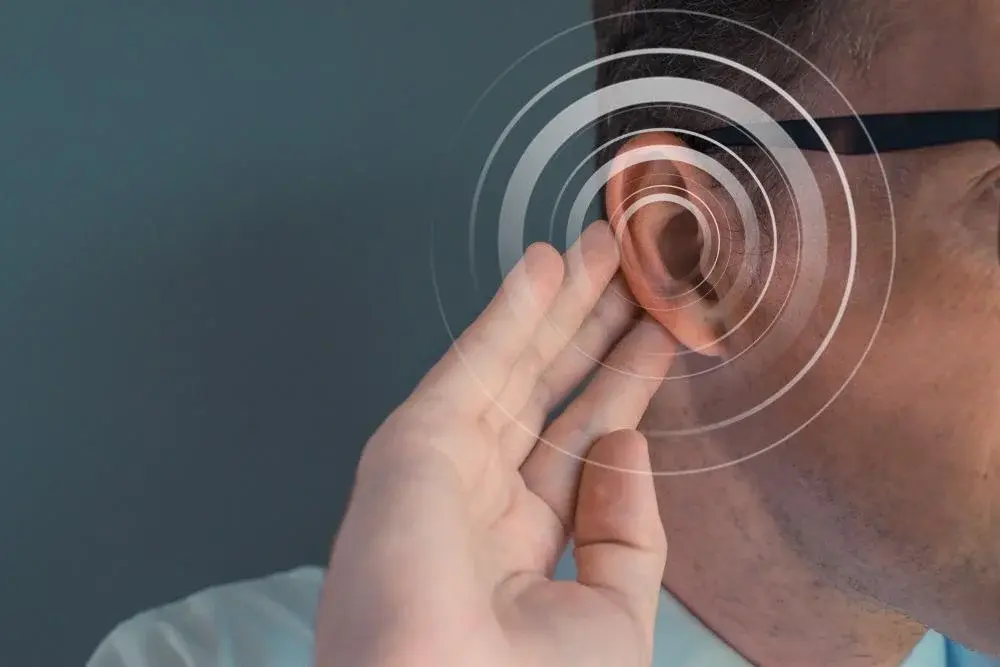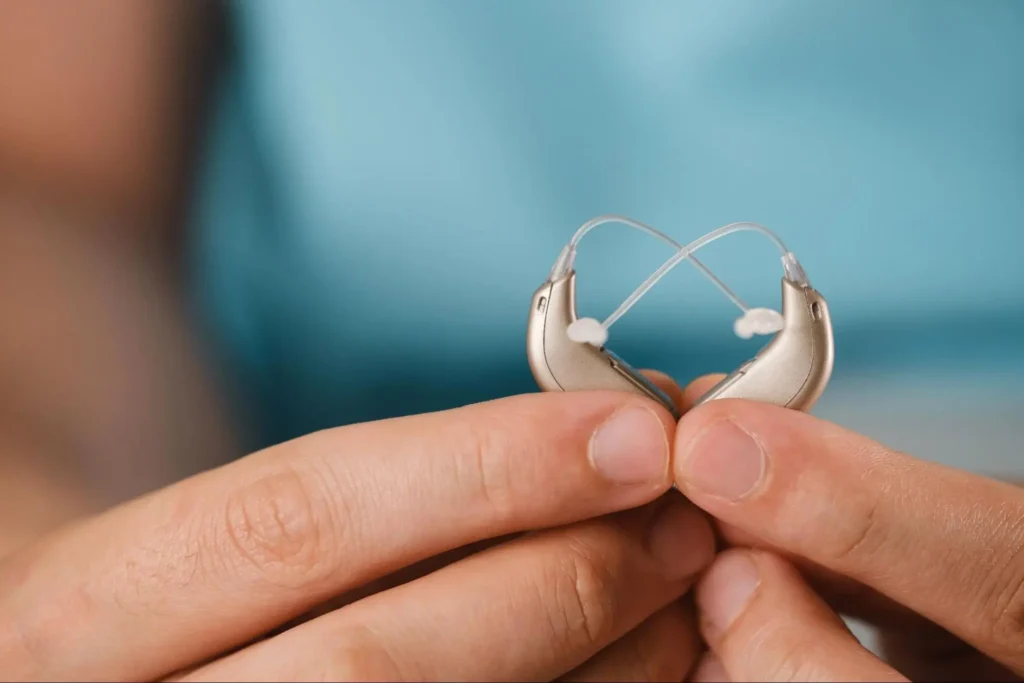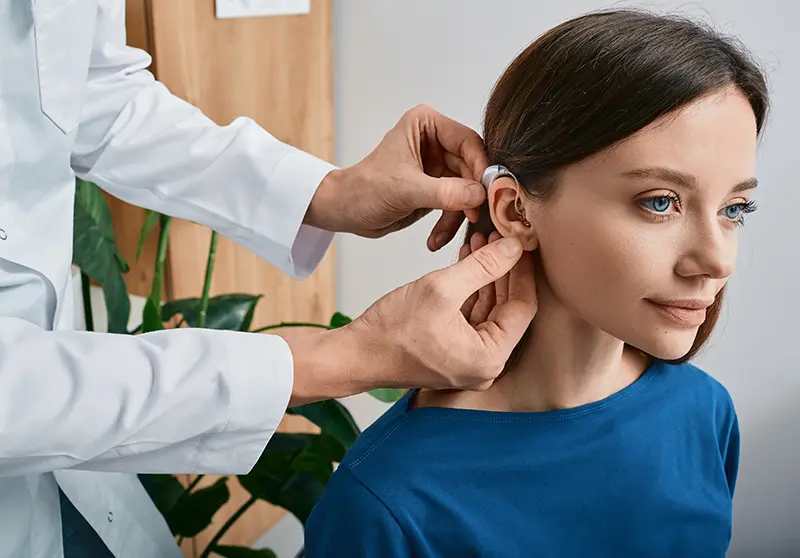Trends Assistive Technology for Hearing: Assistive technology for hearing has evolved rapidly, with innovations designed to enhance the quality of life for millions of individuals with hearing loss. Whether through hearing aids, cochlear implants, or emerging tech, the goal is simple: to make communication more accessible. In this deep dive, we’ll explore the latest trends in assistive technology for hearing, examining the innovations driving the field and how they improve the day-to-day experiences of people with hearing impairments.
Understanding Trends Assistive Technology for Hearing:
Assistive technology for hearing refers to devices and systems that help individuals with hearing impairments communicate more effectively. These range from traditional hearing aids and cochlear implants to newer innovations like hearing-enhanced earbuds or smartphone apps.
Hearing loss affects nearly 15% of American adults aged 18 and older, according to the CDC. This growing need has pushed the development of more user-friendly and technologically advanced solutions to cater to a broad range of hearing difficulties.

Top Trends in Hearing Aids
Rechargeable Hearing Aids
Gone are the days when changing tiny hearing aid batteries was a weekly hassle. Rechargeable hearing aids are gaining traction, offering convenience and long-lasting battery life. The lithium-ion battery technology behind these devices ensures that users can charge their hearing aids overnight, similar to a smartphone, and get a full day’s use out of them.
This trend has significantly enhanced the user experience, eliminating the need to carry spare batteries and making devices more environmentally friendly. Some of the leading manufacturers, such as Phonak and Starkey, have introduced models that can last up to 24 hours on a single charge.
AI-Driven Smart Hearing Aids
Artificial intelligence (AI) is a game-changer in hearing aids. Smart hearing aids, powered by AI, automatically adjust to different sound environments. They can learn user preferences, reducing background noise in crowded places or enhancing speech clarity in quieter settings.
For example, Widex’s Evoke hearing aids use machine learning to adjust to their environment, offering better sound quality and personalization for each user. AI-driven features include:
- Automatic sound environment detection
- Enhanced noise reduction
- Real-time data analysis to improve sound processing
This not only improves the user’s hearing experience but also minimizes the need for manual adjustments.
Remote Adjustments and Telecare
With telemedicine on the rise, remote hearing aid adjustments are becoming more popular. Users no longer need to visit their audiologist for minor adjustments; instead, they can make changes through apps or receive professional support remotely.
Manufacturers like Oticon and Resound offer telehealth platforms, allowing users to connect with their audiologists via video or voice calls and adjust their devices in real-time. This level of convenience has improved the overall accessibility of hearing aids, particularly during the COVID-19 pandemic, when in-person visits were limited.
Hearing Aids with Health Monitoring Features
Beyond hearing enhancement, some hearing aids now function as health monitoring devices. These hearing aids are equipped with biosensors that track the user’s physical activity, heart rate, and other health metrics.
For instance, Starkey Livio Edge AI integrates fitness tracking, fall detection, and heart rate monitoring. This trend highlights a broader move towards multifunctional devices that combine hearing assistance with health and wellness features, improving the overall quality of life for users.
Cochlear Implants: Breaking New Ground
Cochlear implants have long been a transformative option for individuals with profound hearing loss. Recent trends are making these devices even more effective and accessible.
Advanced Sound Processing
One of the key advancements in cochlear implants is advanced sound processing technology, which improves sound clarity and speech understanding. Devices from manufacturers like Cochlear and Advanced Bionics offer:
- Directional microphones to focus on speech in noisy environments
- Faster sound processing for more natural sound quality
- Enhanced speech detection algorithms
These improvements are particularly beneficial in social settings or areas with high levels of background noise.

Hybrid Cochlear Implants
Hybrid cochlear implants are another exciting development. They combine traditional hearing aids with cochlear implants, offering a solution for individuals with partial hearing loss. This type of implant amplifies the lower frequencies, which many hearing aids struggle with, while using the implant to process higher frequencies. This dual approach provides a more comprehensive hearing experience.
Emerging Assistive Technologies Beyond Traditional Devices
While hearing aids and cochlear implants remain essential, several new types of assistive technology are emerging.
Hearables and Personal Sound Amplification Products (PSAPs)
The rise of hearables—wearable hearing technology designed for everyday use—has created new options for individuals who need hearing support but may not require hearing aids. These devices, often referred to as Personal Sound Amplification Products (PSAPs), are becoming more advanced and accessible.
Hearables like Bose SoundControl amplify sound in specific environments, helping users in noisy areas or during conversations. They also connect to smartphones and provide customizable hearing settings through apps. Though not as powerful as hearing aids, these devices offer an alternative for people with mild hearing loss.
Bone-Conduction Technology
Bone-conduction hearing aids are an alternative for individuals who cannot benefit from traditional hearing aids due to ear canal issues or middle ear problems. Instead of amplifying sound through the ear canal, bone-conduction technology transmits sound vibrations directly through the skull bone to the inner ear, bypassing the outer and middle ear completely.
Brands like AfterShokz and Cochlear’s Baha System have been pioneering this technology, which is especially useful for individuals with conductive hearing loss or single-sided deafness.
Also read Supplemental Essays for Rose-Hulman Institute of Technology
Assistive Listening Systems (ALS)
Assistive Listening Systems (ALS) are designed to help people with hearing impairments in large, public spaces like theaters, classrooms, or conference rooms. The most common types include:
- FM Systems: These use radio waves to transmit sound directly to hearing aids or cochlear implants.
- Induction Loop Systems: Common in many public venues, these systems transmit sound via magnetic fields to hearing aids equipped with telecoils (T-coils).
- Infrared Systems: These transmit sound through infrared light waves to specialized receivers.
ALS solutions help bridge the gap between hearing aids and everyday listening environments, ensuring that users don’t miss out on important information in group settings.
The Role of AI in Assistive Technology for Hearing
Artificial Intelligence is revolutionizing how assistive technology for hearing functions, with applications beyond hearing aids. AI-based noise filtering and speech enhancement technologies are being developed to create more effective hearing solutions in diverse environments.
AI can also predict and adjust soundscapes based on the user’s daily routines and preferences. For instance, if a user frequently attends meetings, AI could recognize this and automatically prioritize speech clarity over background noise during those times.
Moreover, AI-driven systems can learn from user feedback, continuously optimizing device performance over time. These systems also have the potential to offer real-time transcription and even translate spoken language into text, further improving accessibility for people with hearing impairments.

Improving Accessibility with Smartphone Integration
Smartphones are now an integral part of assistive technology for hearing. Many hearing aids and assistive devices connect directly to smartphones, allowing users to control their devices with ease.
Popular smartphone apps offer features like:
- Hearing aid adjustments: Apps like Phonak’s myPhonak let users fine-tune their devices, adjust volume, and even set environmental profiles.
- Real-time speech transcription: Apps like Otter.ai and Live Transcribe provide real-time transcription of conversations, making communication easier for those with hearing loss.
- Bluetooth streaming: Users can stream audio directly from their phones to hearing aids or other assistive devices, ensuring high-quality sound for phone calls, music, and media.
These integrations have made hearing technology more convenient, providing a seamless experience for users in their daily lives.
Looking Ahead: What’s Next in Assistive Technology for Hearing?
As we look to the future, several exciting trends are expected to shape the field of hearing assistive technology:
- Brain-Computer Interface (BCI): Emerging research is exploring the potential of BCIs to improve hearing, offering a more direct connection between the brain and hearing devices.
- Fully waterproof hearing aids: Though some hearing aids are water-resistant, the development of fully waterproof models will offer more flexibility and reliability for users in diverse environments.
- 3D-printed, customizable hearing aids: The use of 3D printing could make hearing aids more affordable and customizable, improving both the comfort and performance of devices.
- Expanded access to over-the-counter (OTC) hearing aids: As regulations change, OTC hearing aids will become more widely available, providing a more affordable option for people with mild to moderate hearing loss.
Conclusion
The field of assistive technology for hearing is advancing rapidly, with innovations designed to improve accessibility and user experience. From AI-driven hearing aids to the rise of hearables and bone-conduction technology, these trends offer hope to individuals with hearing impairments, enhancing their ability to connect and communicate with the world around them. Whether you’re looking for advanced cochlear implants or seeking the convenience of smartphone-integrated hearing aids, the future of assistive technology for hearing looks brighter than ever.




